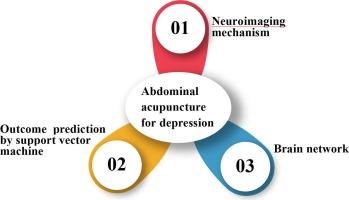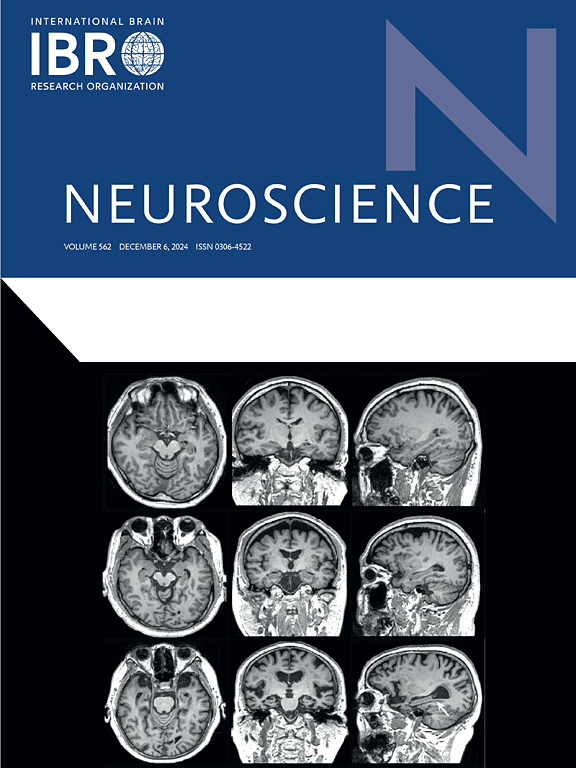大脑功能网络的整合模式可预测重度抑郁症患者对腹针疗法的反应。
IF 2.9
3区 医学
Q2 NEUROSCIENCES
引用次数: 0
摘要
腹针对重度抑郁症(MDD)有确切疗效。我们的研究通过神经影像学检查了腹针如何调节重度抑郁症患者大脑网络内部和之间的整合,以及这种功能整合是否能预测疗效。46名女性MDD患者被随机分为氟西汀+真针灸组(22人)和氟西汀+假针灸组(24人)。分析了两组患者默认模式网络(DMN)、情感网络(AN)、显著性网络(SN)和认知控制网络(CCN)的网络内和网络间功能连接(FC)的功能磁共振成像数据差异。利用具有组间差异的脑区FC和支持向量回归来预测腹针的疗效。结果显示:腹部针灸可改变DMN、AN、SN和CCN的网络内和网络间FCs。以AN和DMN或AN-DMN内的基线FC为特征,结合支持向量回归,可以更好地预测针灸的疗效。我们的研究表明,腹针可以通过调节DMN、AN、SN和CCN功能网络的整合来治疗MDD。DMN和AN内部或之间的基线FC可作为预测腹针疗效的神经标记。本文章由计算机程序翻译,如有差异,请以英文原文为准。

Integration patterns of functional brain networks can predict the response to abdominal acupuncture in patients with major depressive disorder
Abdominal acupuncture has definite efficacy for major depressive disorder (MDD). Our study examined how abdominal acupuncture regulates the integration within and between brain networks of MDD patients by neuroimaging and whether this functional integration can predict the efficacy. Forty-six female MDD patients were randomly divided into a fluoxetine + real acupuncture group (n = 22) and a fluoxetine + sham acupuncture group (n = 24). The differences in functional magnetic resonance imaging data in the intra- and inter-network functional connectivity (FC) of the default mode network (DMN), affective network (AN), salience network (SN), and cognitive control network (CCN) between the two groups were analyzed. The FCs in brain regions with the inter-group differences and support vector regression were used to predict the efficacy of abdominal acupuncture. Our results showed: that the intra- and inter-network FCs of DMN, AN, SN, and CCN could be changed by abdominal acupuncture. Using the baseline FCs within AN and DMN or AN–DMN as characteristics, combined with support vector regression, could better predict the efficacy of acupuncture. Our study suggests that abdominal acupuncture could treat MDD by regulating the integration of the functional networks DMN, AN, SN, and CCN. The baseline FCs within the DMN and AN or between them could be used as neural markers for predicting the efficacy of abdominal acupuncture.
求助全文
通过发布文献求助,成功后即可免费获取论文全文。
去求助
来源期刊

Neuroscience
医学-神经科学
CiteScore
6.20
自引率
0.00%
发文量
394
审稿时长
52 days
期刊介绍:
Neuroscience publishes papers describing the results of original research on any aspect of the scientific study of the nervous system. Any paper, however short, will be considered for publication provided that it reports significant, new and carefully confirmed findings with full experimental details.
 求助内容:
求助内容: 应助结果提醒方式:
应助结果提醒方式:


